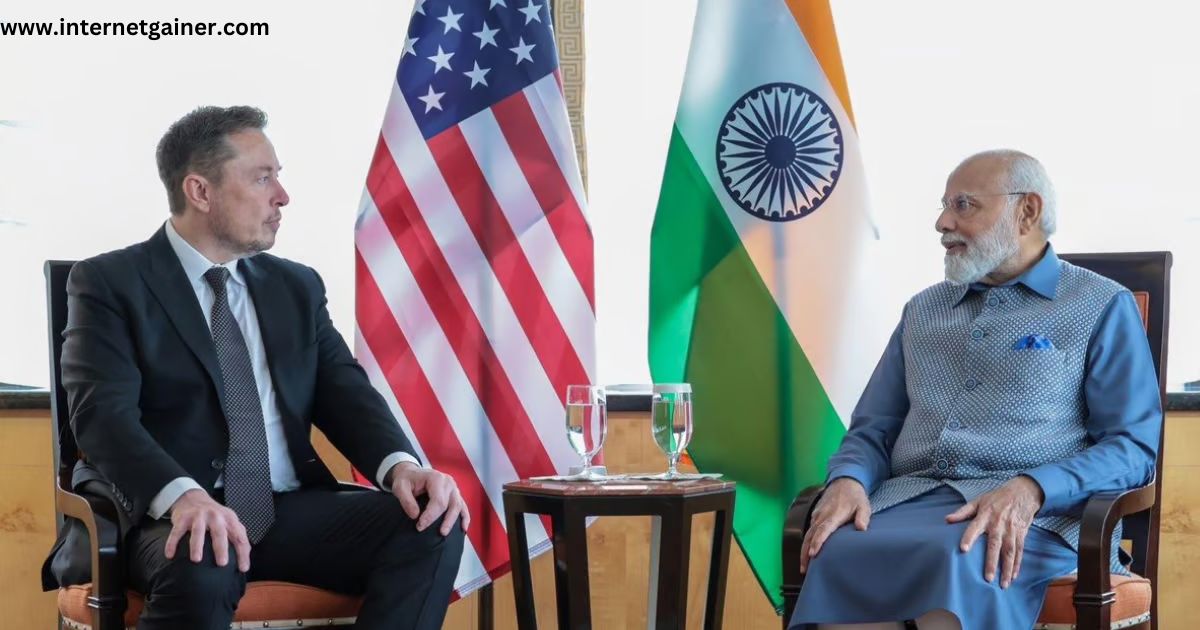Starlink, Elon Musk’s ambitious satellite internet project under SpaceX, has gained attention worldwide for its promise to deliver high-speed internet to even the most remote areas.
In India, where bridging the digital divide remains a significant challenge, Starlink’s services could be transformative. However, compliance with the Government of India’s (GOI) regulations is critical for its operations in the country.
This article explores Starlink’s commitment to meeting GOI requirements, the challenges and opportunities this brings, and its potential impact on India’s digital landscape.
What Is Starlink?
Starlink is a satellite-based internet service that uses a constellation of low-earth orbit (LEO) satellites to provide high-speed internet connectivity globally. Unlike traditional broadband, it doesn’t rely on terrestrial infrastructure, making it ideal for rural and remote regions.
In India, where over 70% of the population resides in rural areas, this technology offers a lifeline to communities struggling with unreliable or nonexistent internet access.
GOI’s Requirements for Starlink
The Government of India has a stringent regulatory framework for foreign satellite operators. Key requirements include:
- Licensing: Obtaining an appropriate license to operate in India, such as the Unified License for satellite communications.
- Spectrum Allocation: Complying with spectrum allocation rules and participating in auctions if necessary.
- Data Localization: Ensuring that user data generated within India remains stored on local servers.
- Security Measures: Adhering to cybersecurity protocols to prevent misuse of communication channels.
- Consumer Protection: Transparent pricing and customer grievance redressal mechanisms.
Starlink’s Commitment to Compliance
Starlink has publicly stated its willingness to comply with India’s regulatory framework. This includes applying for necessary licenses and participating in spectrum auctions, as required. The company has also paused its pre-orders in India until it receives regulatory approvals, demonstrating its adherence to GOI guidelines.
Challenges for Starlink in India
Despite its commitment, Starlink faces several challenges in aligning with GOI’s requirements:
- Bureaucratic Delays: India’s regulatory processes can be time-consuming.
- Spectrum Costs: The auction-based spectrum allocation system may result in high costs.
- Competition: Starlink faces stiff competition from domestic telecom giants like Jio and Airtel, which are also investing in satellite-based internet.
Opportunities for Starlink in India
Despite the challenges, Starlink’s entry into India offers immense opportunities:
- Rural Connectivity: Connecting remote villages and underserved areas.
- Economic Growth: Enabling digital access for businesses in rural India.
- Education and Healthcare: Providing reliable internet for online education and telemedicine.
- Disaster Recovery: Offering quick internet deployment in disaster-hit regions.
The Road Ahead
Starlink’s compliance with GOI requirements is a positive step toward revolutionizing internet access in India. However, its success will depend on navigating regulatory hurdles while maintaining competitive pricing and service quality.
If implemented successfully, Starlink could play a crucial role in India’s digital transformation, supporting initiatives like Digital India and enabling inclusive growth across the country.
Key Takeaways
- Starlink promises high-speed internet access, especially for rural and remote areas.
- GOI’s requirements for licensing, spectrum allocation, and data localization are pivotal for its operations in India.
- Compliance demonstrates Starlink’s commitment to adhering to Indian laws and regulations.
- Challenges such as bureaucratic delays and spectrum costs remain significant.
- Starlink’s potential to transform rural connectivity and drive economic growth in India is immense.
FAQs
1. What is Starlink’s current status in India?
Starlink has paused pre-orders and is working on obtaining necessary licenses and regulatory approvals from the Government of India.
2. How does Starlink differ from traditional internet providers?
Starlink uses satellite technology to deliver internet services, making it suitable for areas without existing broadband infrastructure.
3. Will Starlink’s services be affordable in India?
Pricing details are yet to be finalized, but affordability will be key to its success in India’s competitive market.
Final Thoughts
Starlink’s readiness to comply with the GOI’s requirements reflects its commitment to bringing cutting-edge technology to India while respecting the country’s regulatory framework. If successful, this could be a game-changer for India’s connectivity landscape, bridging the digital divide and empowering millions with reliable internet access. For more Starlink Internet information check the internetgainer.



